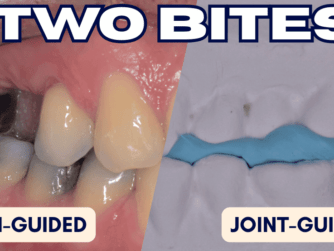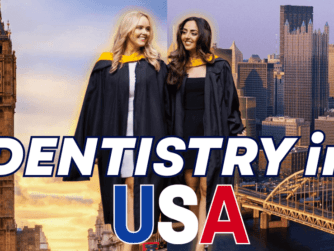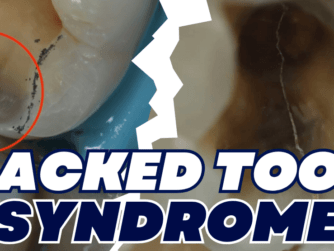Podcast: Play in new window | Download (Duration: 1:06:07 — 91.7MB)
Subscribe: RSS
Are “contact lens veneers” just fake news?
Why is the traditional 0.7mm prep approach outdated?
Are you truly preserving enamel in your veneer preparations?
Should you ever bond veneers to root dentin or cementum after crown lengthening?
Why is the Galip Gürel technique the gold standard for minimal prep veneers?
Dr. David Bloom joins Jaz for an insightful episode, sharing his 36 years of experience in cosmetic and restorative dentistry. With over two decades in the same practice, he’s seen what works—and what leads to failure—when it comes to veneers.
We also cover the key steps in mock-ups, planning, and veneer preparation.
Protrusive Dental Pearl: Always Wax Up for 10: When planning veneers, start with a 10-unit wax-up (even if the patient initially wants 4 or 6). This allows them to visualize their full smile with a mock-up, compare different options, and make an informed decision. It’s not about upselling – most patients will appreciate the fuller look.
Key Take-aways:
- Health and diagnosis are foundational in cosmetic dentistry.
- Visual try-ins are crucial for patient engagement and satisfaction.
- Minimally invasive techniques are preferred for cosmetic procedures.
- Communication with patients about their options is essential.
- Bonding to enamel is more reliable than bonding to dentin.
- Permission statements help in guiding patient expectations.
- The transition from veneers to crowns should be carefully considered.
- Staining is not the primary concern when bonding to dentin.
- A change in surface texture is key in modern dental preparations. Visual aids are crucial in helping patients understand their treatment options.
- The Gurel technique emphasizes minimal preparation for veneers.
- Effective communication with patients can enhance their treatment experience.
- Understanding occlusion is fundamental in aesthetic dentistry.
- Veneer thickness should be as minimal as possible for aesthetic results.
- Patient involvement in the design process is essential.
- Cementation techniques can vary based on gingival health.
- Maintaining a facial path of insertion is important for aesthetic outcomes.
- Building a good relationship with lab technicians is key to successful restorations.
Need to Read it? Check out the Full Episode Transcript below!
Highlights of this episode:
- 02:56 Protrusive Dental Pearl
- 04:15 Interview with Dr. David Bloom: Journey and Expertise
- 11:54 The Importance of Enamel in Veneer Longevity
- 13:46 Prepless Cases and Visual Try-Ins
- 18:54 Permission Statement
- 22:24 Visual Try-Ins Protocol
- 25:13 Decision-Making: Veneers vs. Crowns
- 28:35 Bonding to Root Dentine and Long-Term Outcomes
- 33:34 Opening Embrasures: Techniques and Tips
- 35:19 Visual Try-Ins and Patient Communication
- 38:50 Wax-up in Occlusion
- 41:25 The Gurel Technique Explained
- 47:09 Black Triangles
- 49:40 Guidelines for First Veneer Case
- 54:10 Contact Lens Veneers
- 56:18 Cementation Preferences and Techniques
- 01:00:15 Final Thoughts and Educational Resources
Need expert guidance on veneers and smile design?
Join Intaglio Mentoring and connect with top mentors for real-time case support and level up your Dentistry. Dr David Bloom is also a mentor on Intaglio.
Watch this space for David’s new educational website coming soon – he teaches Veneers hands-on too.
If you loved this episode, make sure to watch How to Temporise Veneers Step by Step FULL GUIDE – PDP214
This episode is eligible for 1 CE credit via the quiz on Protrusive Guidance.
This episode meets GDC Outcomes B and C.
AGD Subject Code: 780 ESTHETICS/COSMETICDENTISTRY (Tooth colored restorations)
#PDPMainEpisodes #AdhesiveDentistry
Aim:
To provide an in-depth understanding of minimal preparation veneers, focusing on enamel preservation, diagnostic workflows, patient communication, and clinical techniques to enhance the longevity, function, and esthetics of veneer restorations.
Dentists will be able to –
- Identify when a prepless approach is feasible and when minimal preparation is necessary.
2. Use visual try-ins effectively to enhance patient understanding and involvement in treatment decisions.
3. Understand long-term maintenance, including managing black triangles, embrasure shaping, and repairs.







